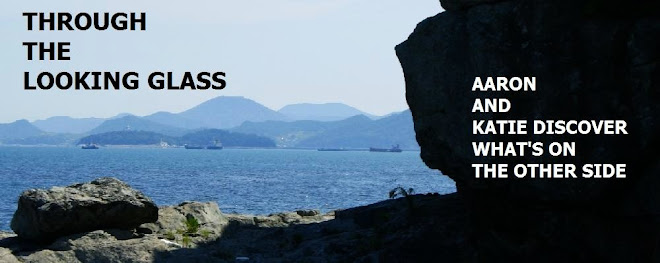
Summer in Korea is characterized by high heat and humidity, and the deafening drone of millions of singing mae-mees (the Korean word for "cicada"). I, for one, was excited when I heard the first cicadas a couple of weeks ago. My fondness for these bugs goes back to my childhood in Texas, when I spent countless summer hours climbing trees and catching them. Cicadas are not harmful to plants, and cannot bite or sting.

Cicadas are really fascinating insects. They exist on all the continents except Antarctica, and there are so many species that many remain unclassified. Depending on the species, they spend three to seventeen years underground as nymphs, and then crawl to the surface. After climbing a tree, they perform their final molt, turning into a large, winged bug. In one short summer they sing and mate, lay their eggs and die.

They leave their empty skins, like these, all over trees and bushes.


As in Texas, you can see cicada skins on nearly ever tree you look at. Here Katie holds a leaf with one on it to provide a sense of scale.

Generally, Cicada nymphs emerge from the ground to molt at night. This is because while they are shedding their skin they are especially vulnerable. The few nymphs that, for whatever reason, emerge after daylight are often eaten by birds or, as with this one we found, by ants.

The most common cicada here is this small, well-camouflaged kind. These really blend in with trees, making them more difficult to spot than the ones I grew up with in Texas. The most common Texas species was tibicen superba, which was bright green; click here to see a photo of one. We have also seen some very large blackish ones, but I haven't been able to get close enough to one to take a picture.

Cicada songs vary by species. These have a shrill "whine" that sounds like a small motor running at a very rate of RPMs. Cicadas love the heat, so the hotter the day, the louder the cicadas. Sometimes they will taper off if the sun goes behind a cloud. But the moment the sun comes out again they all resume in unison. I asked some of my students if they liked mae-mees, and most said "yes". A few said they didn't, and when I asked them why they said, "Teacher, loud!". They also informed me, with no small display of disgust, that in China people eat mae-mees.


While Katie and I were cicada hunting, we also ran across this spider. We think it was wrapping up a bug, but couldn't be sure. We've seen more spiders in Korea than Katie is comfortable with.


To our surprise, a number of trees have suddenly blossomed here. We had assumed that the flowers left with the spring, but these blossoming trees are everywhere.






























